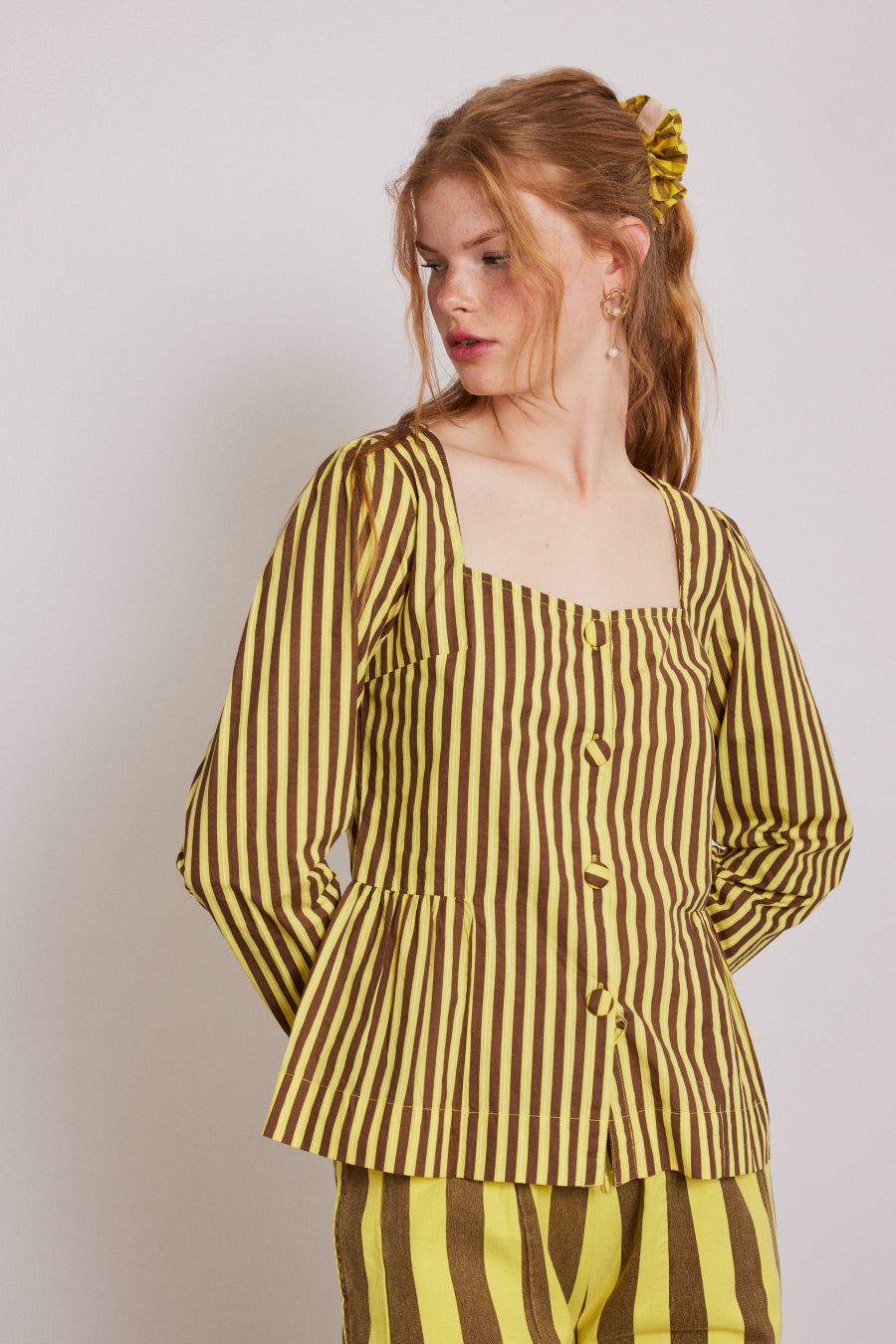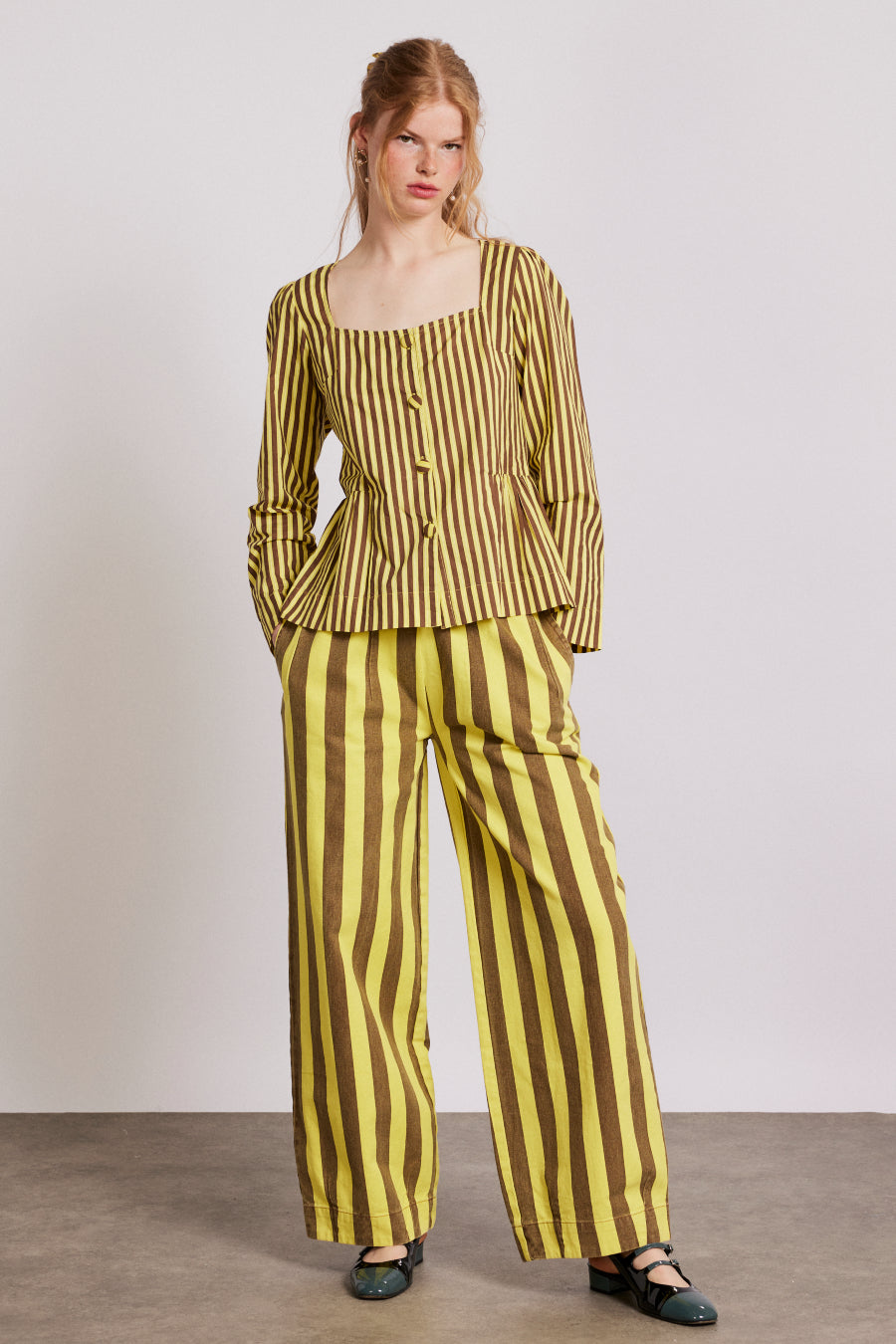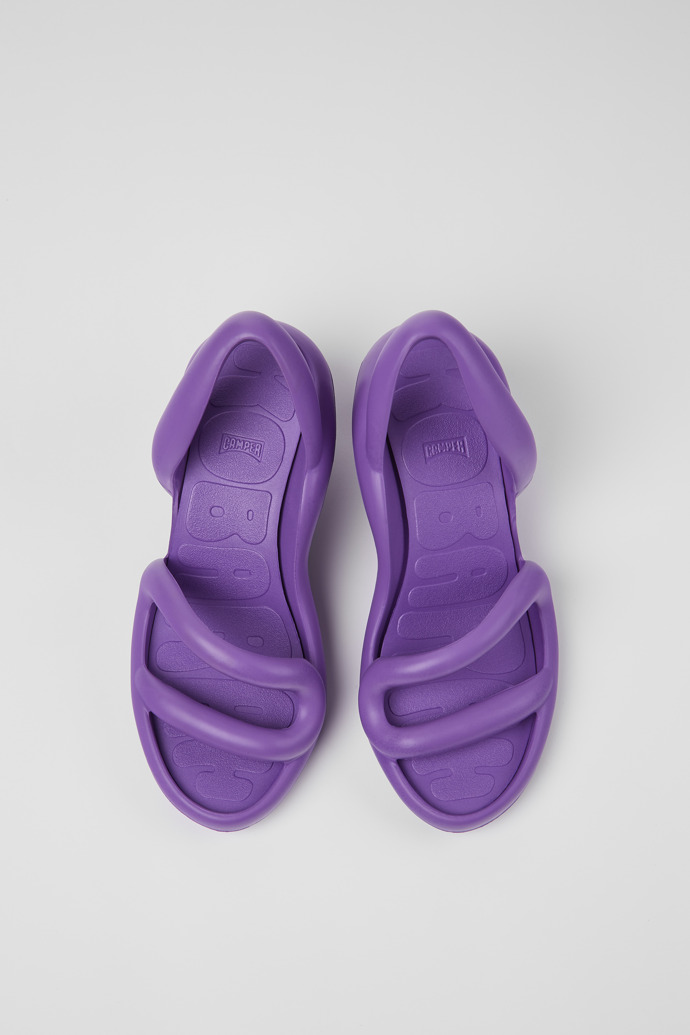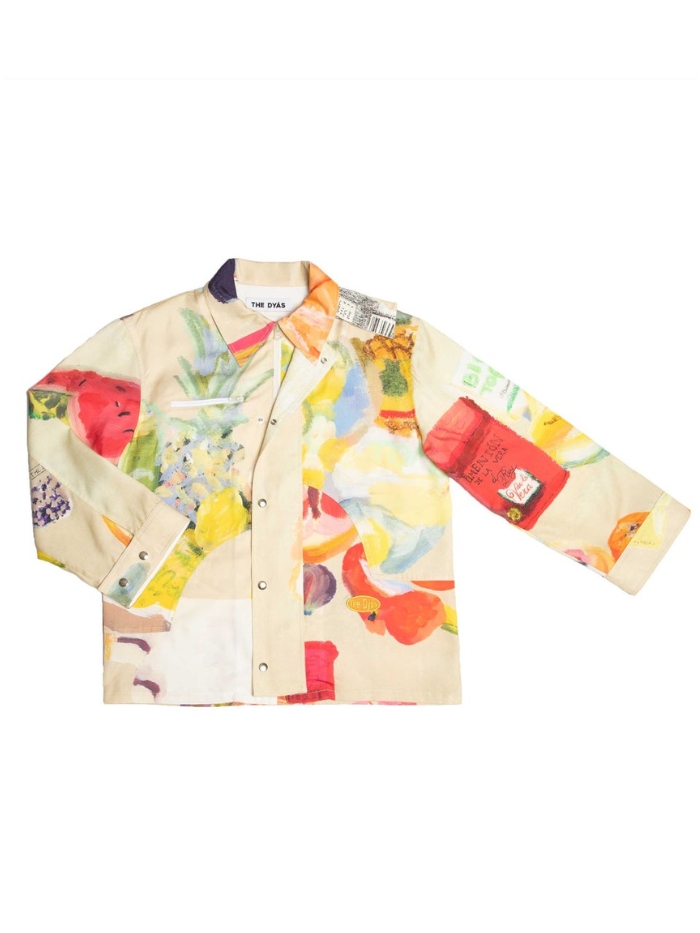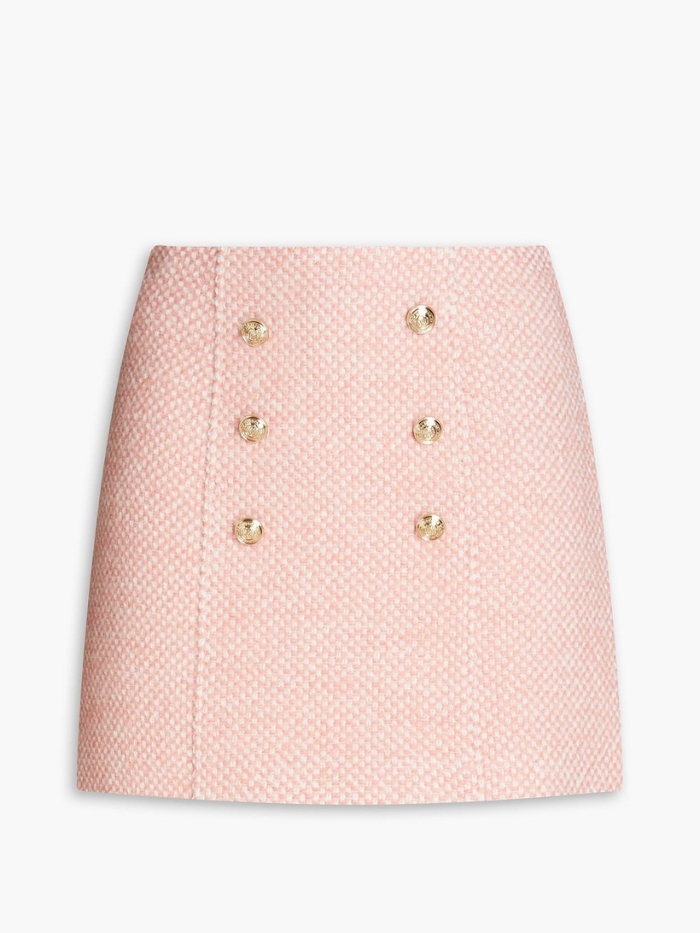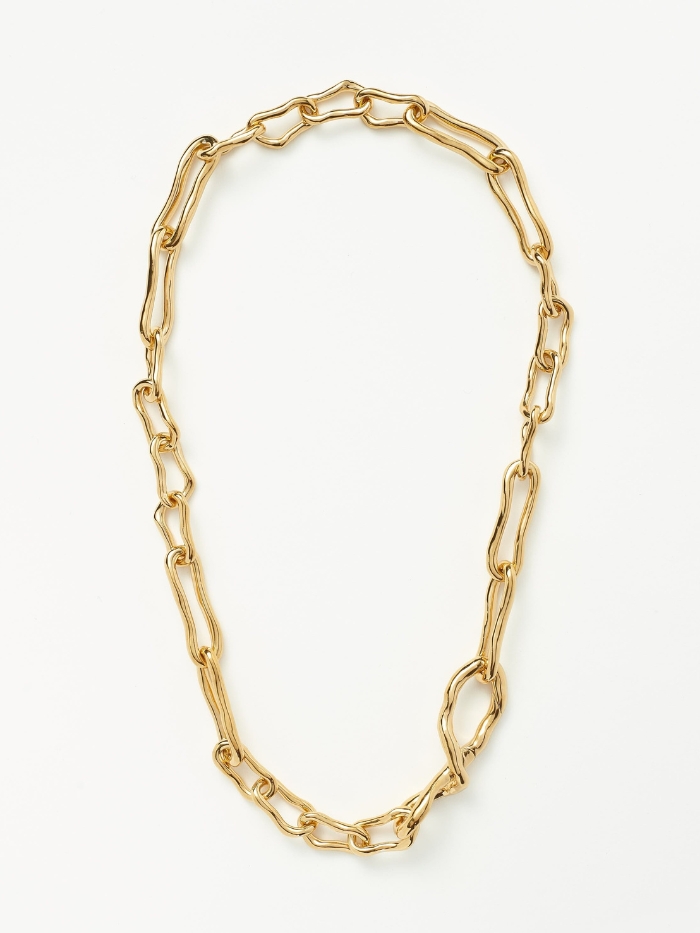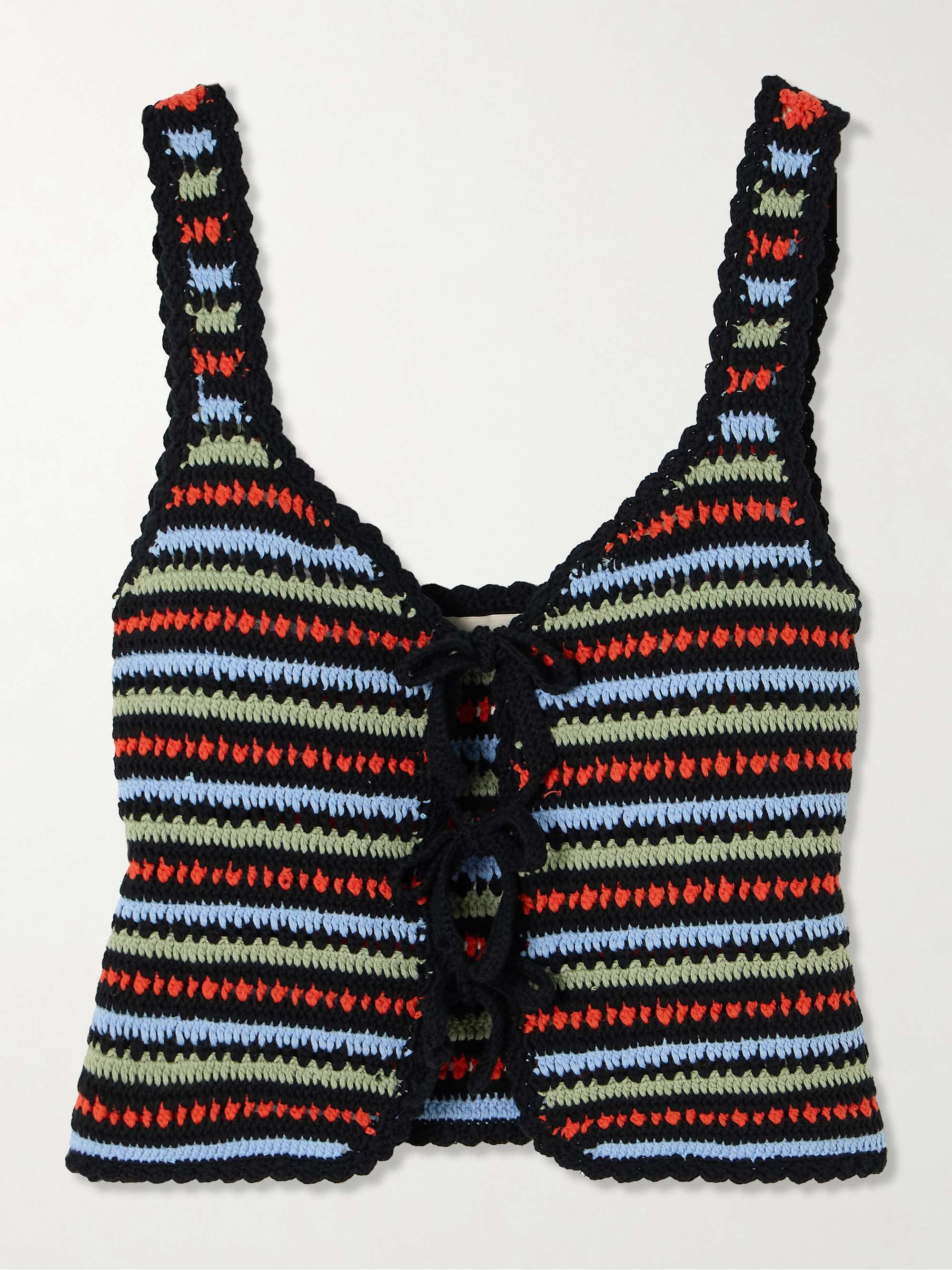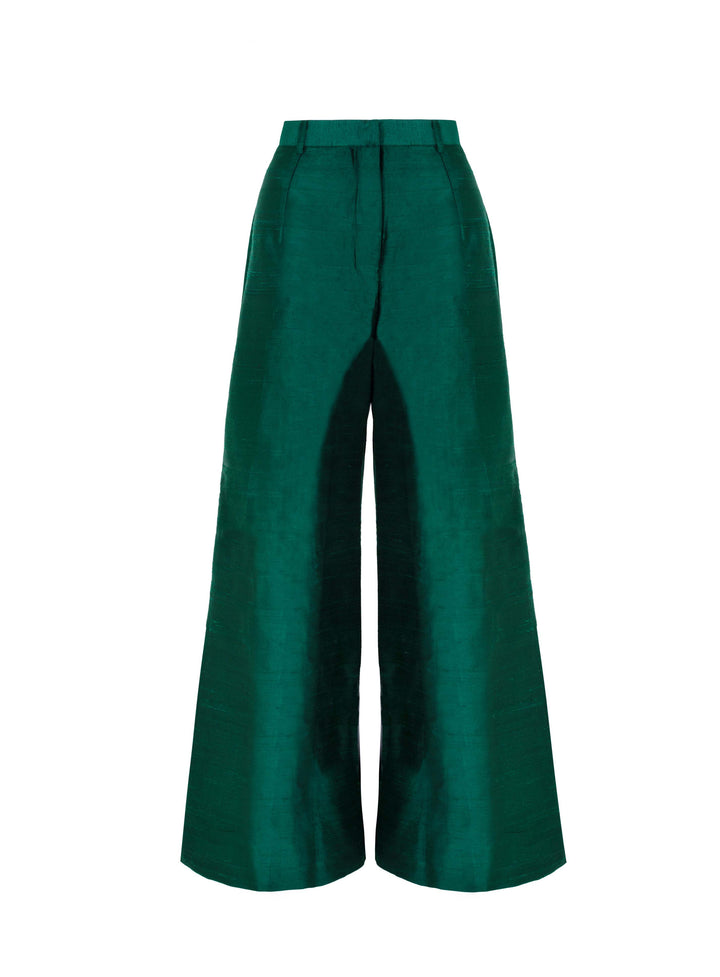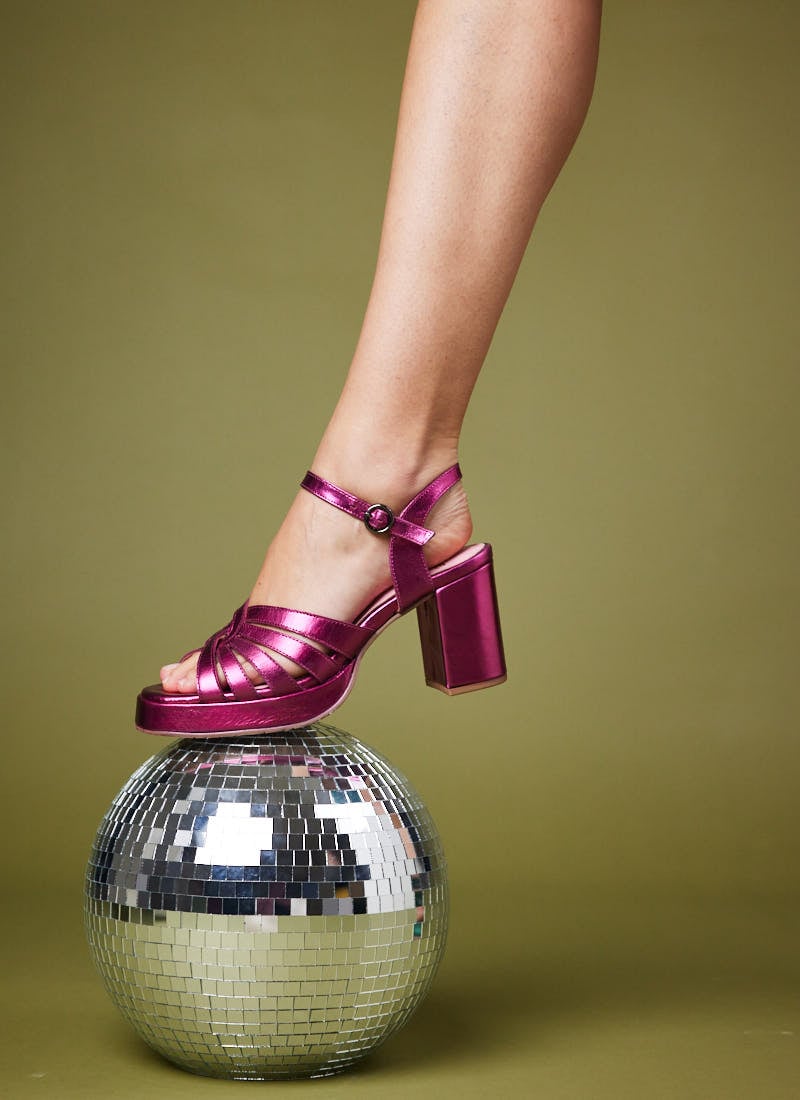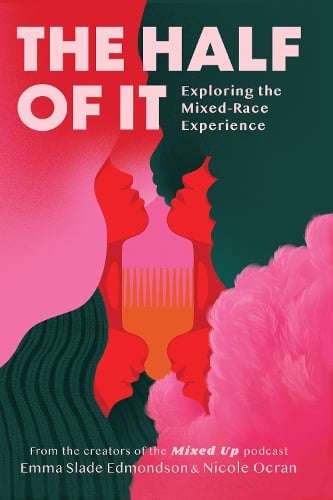From Dopamine Dressing to Shaking Up the System: Emma Slade Edmondson and Nicole Ocran Share Their Style Journeys
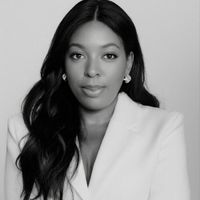
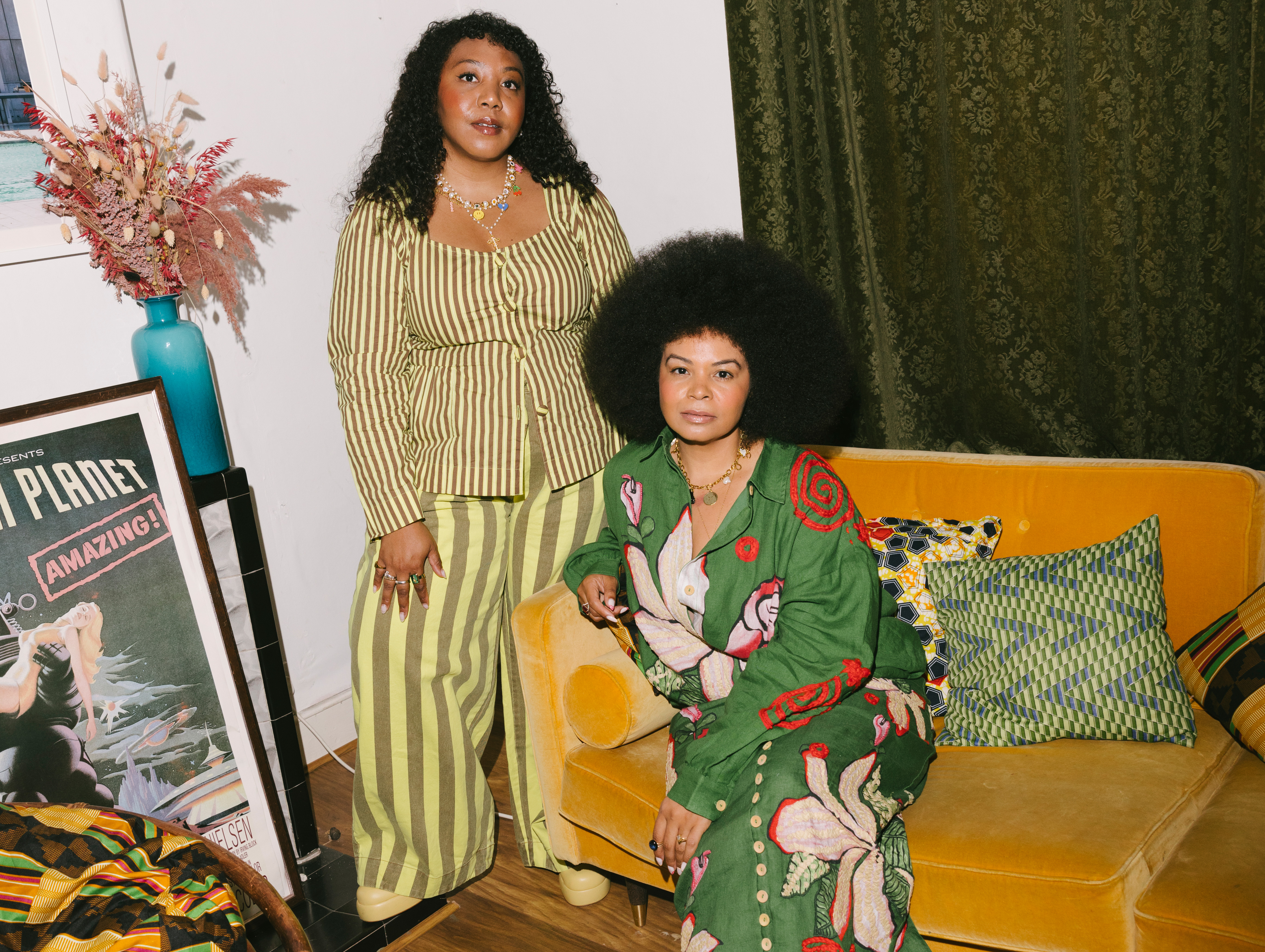
The last four years have been a whirlwind journey for sustainability and comms consultant Emma Slade Edmondson and journalist and content creator Nicole Ocran. While the rest of the world tried to navigate the post-pandemic world, the duo met, started a successful podcast, and have written and released a book exploring the unique perspective of the mixed-race experience. We caught up with Edmondson and Ocran ahead of the launch of The Half of It—the duo's first publication—to find out how growing up on other sides of the pond but with a shared love of fashion led to the perfect pairing.
Nicole Ocran: I was born in Washington, D.C., but grew up in Alexandria, Virginia, which is essentially a suburb outside of D.C. Growing up, I went to Catholic school and had to wear a uniform every day, and I hated it. I kept trying to find small ways to make my uniform more individual and more meaningful to me. I'd play around with socks and badges, ribbons, things like that, but at home, my dad is from Ghana and my mom's from the Philippines, and growing up, I wasn't into wearing traditional clothes or making any real reference to my heritage. My mom and my aunts would always give me gold, pearls, and jade, and I was like, "No, I'm into silver." I think I just knew that was gonna be a thing that made me stand out amongst my friends. But by the time I was a teenager, my style turned into this kind of punk and emo-kid vibe, and when I moved to London, I really felt like I found and honed my personal style, playing with colour and shape a lot more. I started to seek out textures, prints, and more cultural, heritage pieces and wanted to be able to highlight the importance of those influences in my life.
Emma Slade Edmondson: I was born in Edgware, grew up in Harrow and then moved to Bushey when I was about 9. My mum was a huge influence on my fashion sense. She was always really into fashion, so much so that when she was younger, she used to go to new designer markets in Camden and find such cool stuff. We had a lot of hand-me-downs when I was growing up, and I used to have all my mum's old stuff. The pieces that she wore in her 20s, I was wearing when I was, like, 14—it was bonding. So I've always had a love of secondhand fashion and that kind of emotional connection to clothes and the stories behind them from quite early on. I remember a herringbone dress with a corset and a slit up the side, very form-fitted, but beautiful material. I wore it to sing for the first time on stage at school. I also used to wear my granddad's stuff, like his old jumpers and that kind of thing. There are a lot of moments that I remember that are really associated with some of the things that my family gave to me.
I've always been quite rebellious with my style because even when I was wearing hand-me-downs, none of my peers were wearing anything like it. Everyone was in baggy jumpers and tracksuit bottoms, but I got a job so I could buy my own clothes and to look a bit different. That otherness is something that Nicole and I both experienced. Growing up in majority white environments and schools, you kind of have to embrace the difference because otherwise what else is there?
There are a lot of moments that I remember that are really associated with some of the things that my family gave to me.
Emma Slade Edmondson
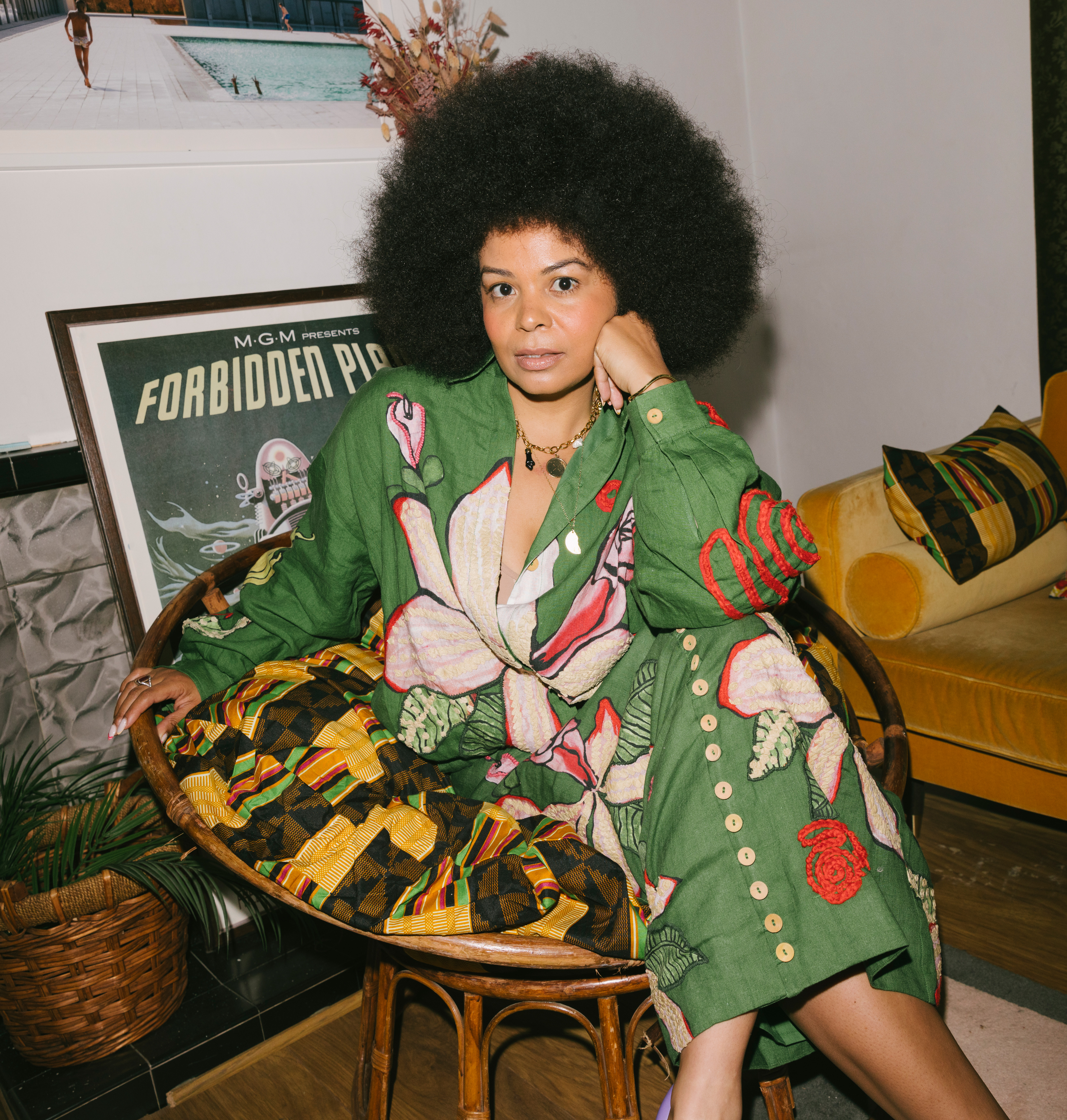
NO: I didn't like looking the same as everybody else, even though that was a requirement. Trying to individualise my uniform and the way I dressed from an early age was part of that. In my punk and emo era, I collected so many different band T-shirts over the years (and I still actually have quite a lot of them today even though they don't fit me anymore). But that was my way of standing out against the people who were into polo shirts and jeans or ra-ra skirts. I remember watching Anna Stern [from The O.C.] and thinking, "Oh, my God, she's so cool," because she was introduced as the alt character who wore hats and layered her shirts. The same with Angela Moore from Boy Meets World. She would layer up all these amazing earth tones, and I was so into it because it was also one of the rare times I saw Black girls looking cool on TV.
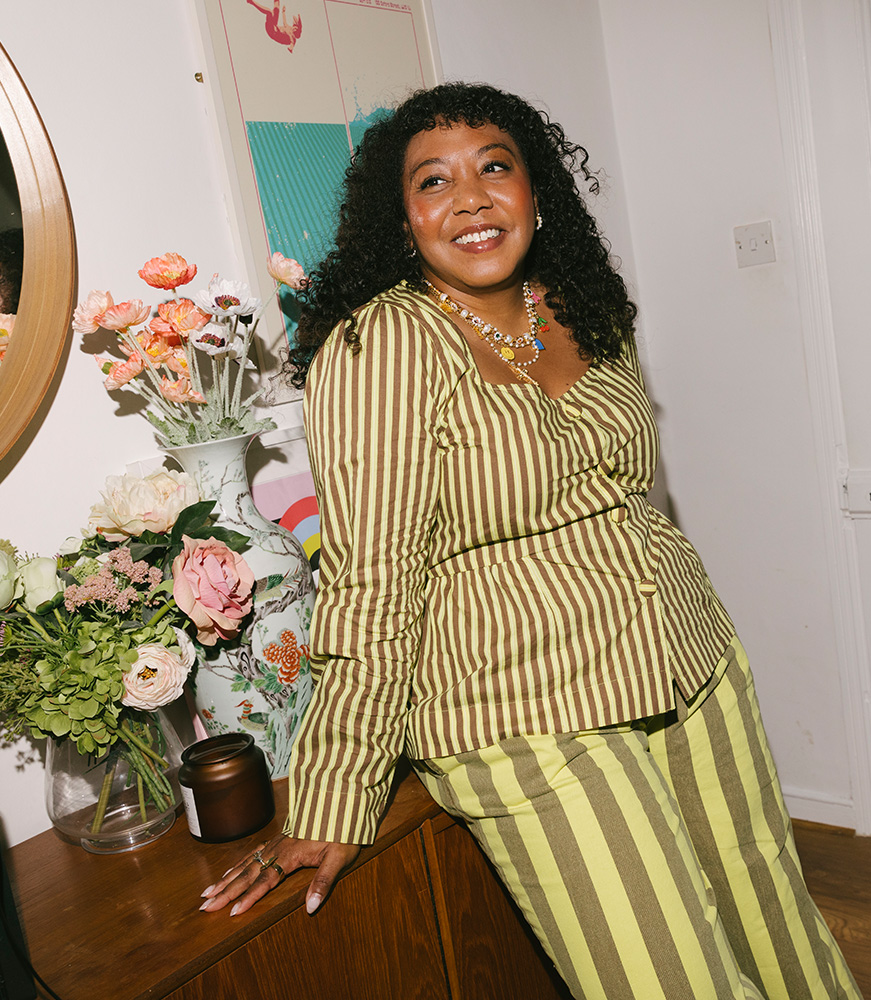
My mom was an executive assistant my whole life, so she was very into blazers, skirts, and suits. I think it reminded me of the uniform and that very particular corporate way of dressing. We had a very Catholic household, so I'm used to dressing up for occasion, and although I didn't enjoy the mass element, I loved the act of us getting dressed up and watching her putting makeup on. She's big on accessories and definitely a bag person, and I love that a lot about her style. Even now, I'll go through her jewellery and borrow things, and I see the similarities that we share now.
ESE: I remember once going to a party with another little girl, I must have been really young, and she had this incredible, poofy, ridiculous party dress. I went on at my mum about it for ages because I didn't have anything like that, and she ended up buying me one. It was ridiculous, huge shoulders, and purples, yellows, pinks in watercolours, but that princess dress is such a formative memory for me. I was just obsessed with it. I didn't want to wear anything else.
NO: When I think of Emma's style, vintage is obviously the first thing that comes to mind, but I think when people hear the word vintage, they have a very specific idea in mind, and that's not her to me. She's elevated, she's cool, she's chic, with that vintage twist to it, because there are so many things that she wears that I would see on a rack and never think would work, but she makes it look like it belongs in this era.
ESE: I would say Nicole's style, for me, is, colourful, eclectic, but also really similar to the way that she is on the internet. She always knows what's hot and what's not and what's up and coming. She's always on trend but always so joyful. I love to think that someone would describe my style as elevated, especially because of my tenure in fashion, and for me, what I put together should be art. As time goes on, my style is always evolving, and I'm always building on what my style even is—I'm really enjoying being bit of a chameleon. I like to think, "What is the occasion? What am I dressing for?" and work to that. You can still be stylish without needing to buy new things to create that. Now I'm married to a Nigerian man, have a Nigerian family, and am an honorary Nigerian. I've taken a lot of style influences from them and making trad, and I love getting deep into that design process.
NO: Fashion is supposed to be a creative process where you pair things and have fun with it. I don't love the capsule wardrobes and the matchy-matchy. I love to mix things you don't expect to go together. I don't need to know that black and beige and greys are going to go with white— that isn't interesting to me.
ESE: She is definitely not a monochrome girly.
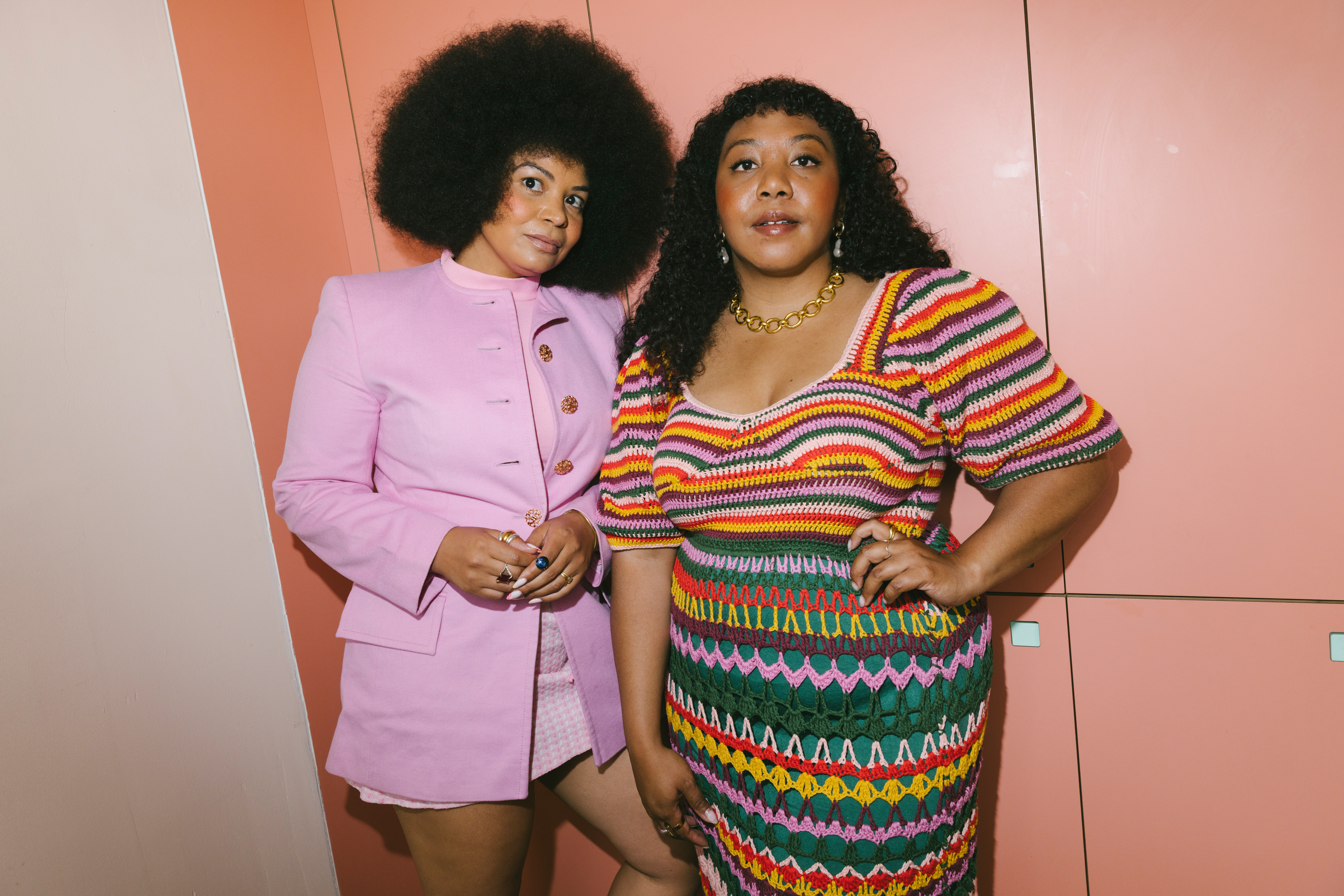
NO: Fashion was something that I always wanted to do but I never thought was an accessible thing for me. Growing up in Virginia, no one I knew had ever worked in fashion. It was a "city" thing or a New York thing. I grew up reading and collecting magazines and knowing it was my dream to work for a fashion magazine one day, but I knew that my parents would never want to send me to fashion school. At that point in time, I thought there was a very clear path to access that world, and I was so far off it that I didn't even bother thinking I could do it. I worked at Target and then H&M and would spend a lot of my time at the mall amongst clothes, and at home I would collect and read magazines before cutting out all of the different outfits and looks that I loved and collaging them together. That was my fashion outlet at the time.
I wanted to move to New York, and my way of getting there was going to be journalism school and going to Columbia, but my dad said, "You'll end up in hundreds of thousands of dollars worth of debt. Pick another place." And so I chose London, went to City University to study journalism, and after getting a job and working in a corporate environment for such a long time, I wanted to get back into writing and feeling creative, which is how I then started my blog. I never thought anything of it. I just knew that I loved reading other people's blogs and watching people's YouTube channels, and I had no big goals in terms of wanting to be in fashion or even fashion adjacent. I just knew that I wanted to have fun with things again after feeling uninspired.
ESE: I wanted to be an author, but as creatives, we can do a lot of different things, and I've definitely had a lot of careers at this point. I'm very happy to have experienced so many different elements of that creative world, from working in PR to being an advertising professional, being a stylist—I'm now a consultant in sustainability and ethics. And I think I never really said "fashion is my career," because I didn't know what that looked like when I was young other than working in retail, but I knew that wasn't going to be for me forever.
After I came up with Charity Fashion Live, I'd worked for quite a lot of charity fashion retailers to essentially redo the charity retail space. I was looking for my next project and started doing this little show [Come Secondhand Shopping With Me], with the idea of getting major influencers interested in secondhand and vintage shopping. After Charlotte Jacklin and Liv Purvis asked me to do a live episode of their podcast The Fringe of It, I was introduced to the content creator world, and I reached out to Nicole because I thought she would be wonderful for my show. We met up for a drink and within about five minutes were talking about being mixed, and we haven't stopped since. We met in the afternoon, and by the evening, we'd talked about doing the podcast, and by the following week, I'd bought a mic.
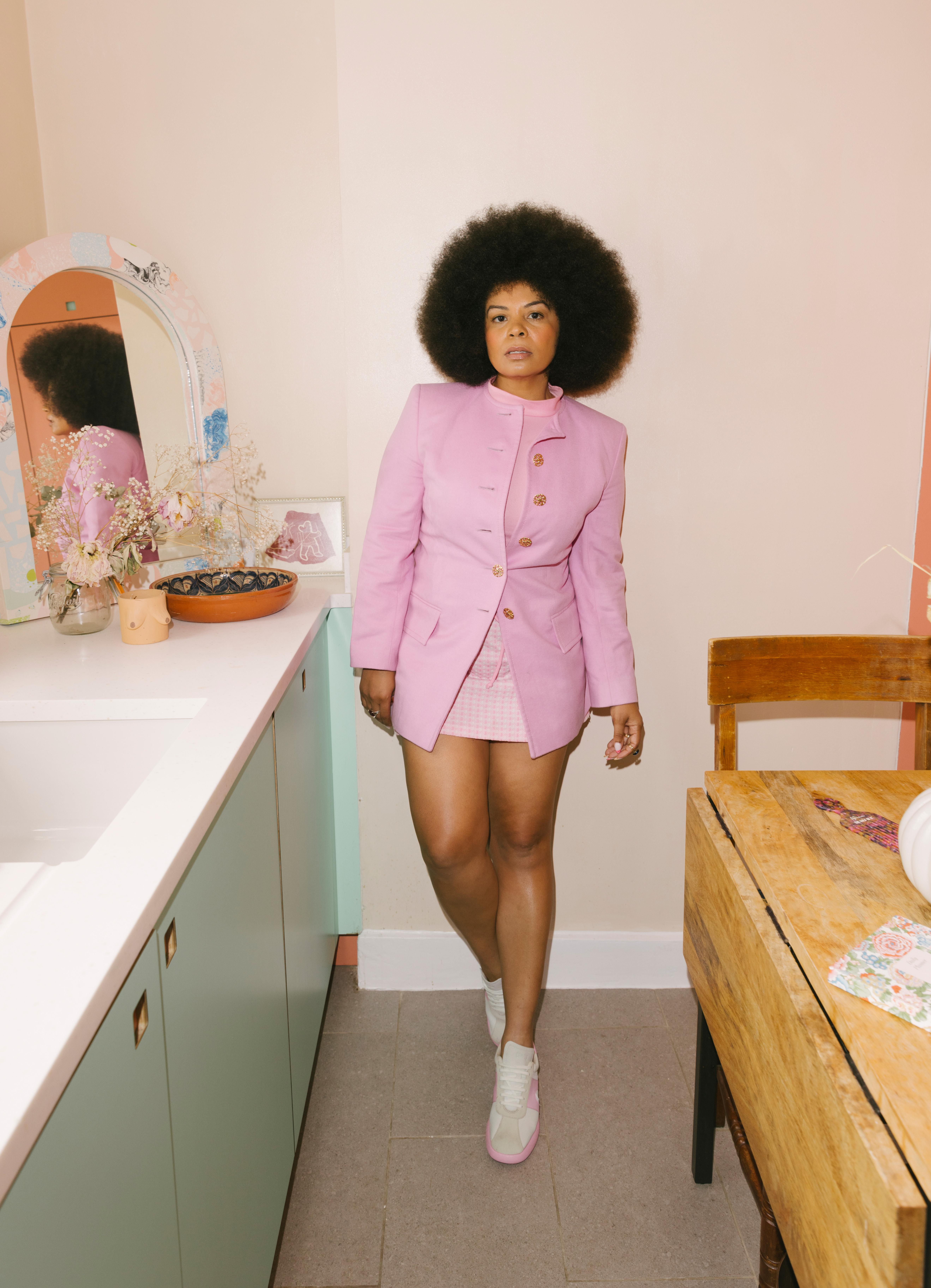
NO: I know we keep saying every episode that we record is our favourite episode, but it's so hard not to. Speaking for myself, when we interviewed Mel B, that was, like, the most iconic moment. When we first decided we were gonna do the podcast, she was the person that we desperately wanted to interview. One of my other favourite moments was interviewing Jordan Stephens—I think he was one of the first men that we spoke to. People didn't really know who we were then and what we were trying to achieve, but he was so super generous with his time and what he wanted to say. Everyone has been amazing—Melissa Hemsley, Anna Sulan Masing. Not all of the stories are traumatic or sad. We've also done episodes on food, for example, that turn out to be so heartwarming.
ESE: We've been lucky to interview a lot of celebrities, but I would say that a lot of the most fascinating interviews for me were not necessarily famous people. We spoke to one woman who wanted to investigate her past after finding out she was adopted and ended up tracking down her dad and realising she was half sisters with her best friend. We also had on a friend of mine who is Ukrainian Liberian at beginning of the Ukraine-Russo war. It was such an interesting take that no news outlet had done, and we got to speak to her about how she felt about seeing Black people being turned away from trains out of Ukraine. What if she had still been there with her children? Would she be separated from her kids because she's darker skinned than them? We get so much out of every conversation.
NO: We've been able to cultivate this space over the years where we're very open with our guests, and we tell them up front, if there's anything that they don't want to discuss, we're happy to not go down that road. But also the fact that we do share our stories too, celebrities in particular are like oh, no one's ever asked us these questions about being mixed before! We definitely got the feeling that people were looking for that opportunity speak freely.
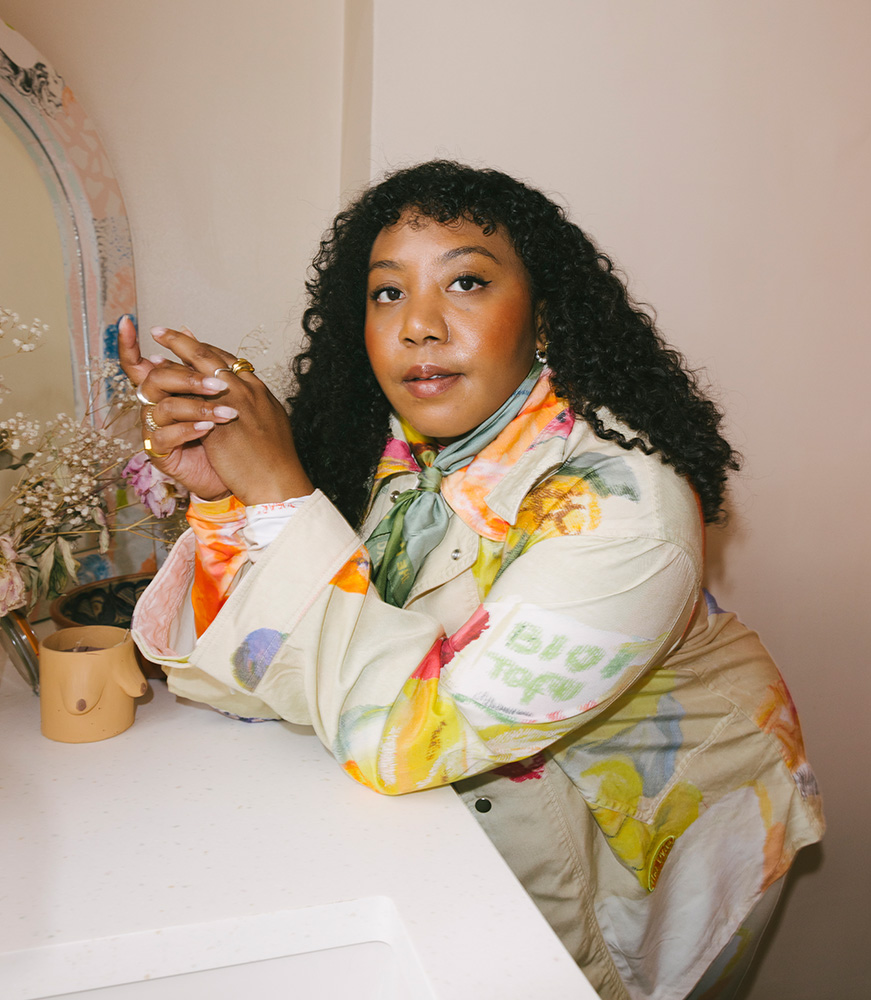
Fashion is an incredible connector and has always been a way to speak to people, and so I find it strange when people use fashion as a tool to shut people out.
Nicole Ocran
I feel like there was a real shift in priority to be outwardly diverse after 2020 that maybe lasted for about a year and a half, and since then we've kind of seen the pendulum swing in the other direction. It's clear that that wasn't something that was sustainable for a lot of brands, and the real priority wasn't about just how they look, but their attitude in general towards the concept of diversity in a multicultural and global world. Fashion is an incredible connector and has always been a way to speak to people, and so I find it strange when people use fashion as a tool to shut people out.
ESE: I think things have really deteriorated in regard to representation in the social media space. If we're talking about content creators and brands and how they want to be seen, there was a moment, and then it was like everyone was dropped. When I came up with Charity Fashion Live as a concept, I wanted it to be the antithesis of fashion week. I wanted everyone to be able to access it, so it could be online, and you can see it happening. You can walk into the charity shop if you want to see the catwalks up close. Everyone is invited because style and fashion belongs to us all. It doesn't belong to people that just sit in the front row. That's bullshit. And how can young people be inspired if they're not part of the conversation?
It would be nice to see more mixed designers too because I would love to rep them. Like Priya Ahluwalia or Simone Rocha, I'm moved to wear them because it's a mixed designer who displays her heritage in all of her work. Regardless of whether Priya is talking about culture from the perspective of the surface-level things people see and understand or whether she's talking about waste culture and what that means for the places that she calls home, that's all in there. That, for me, is the holy grail.
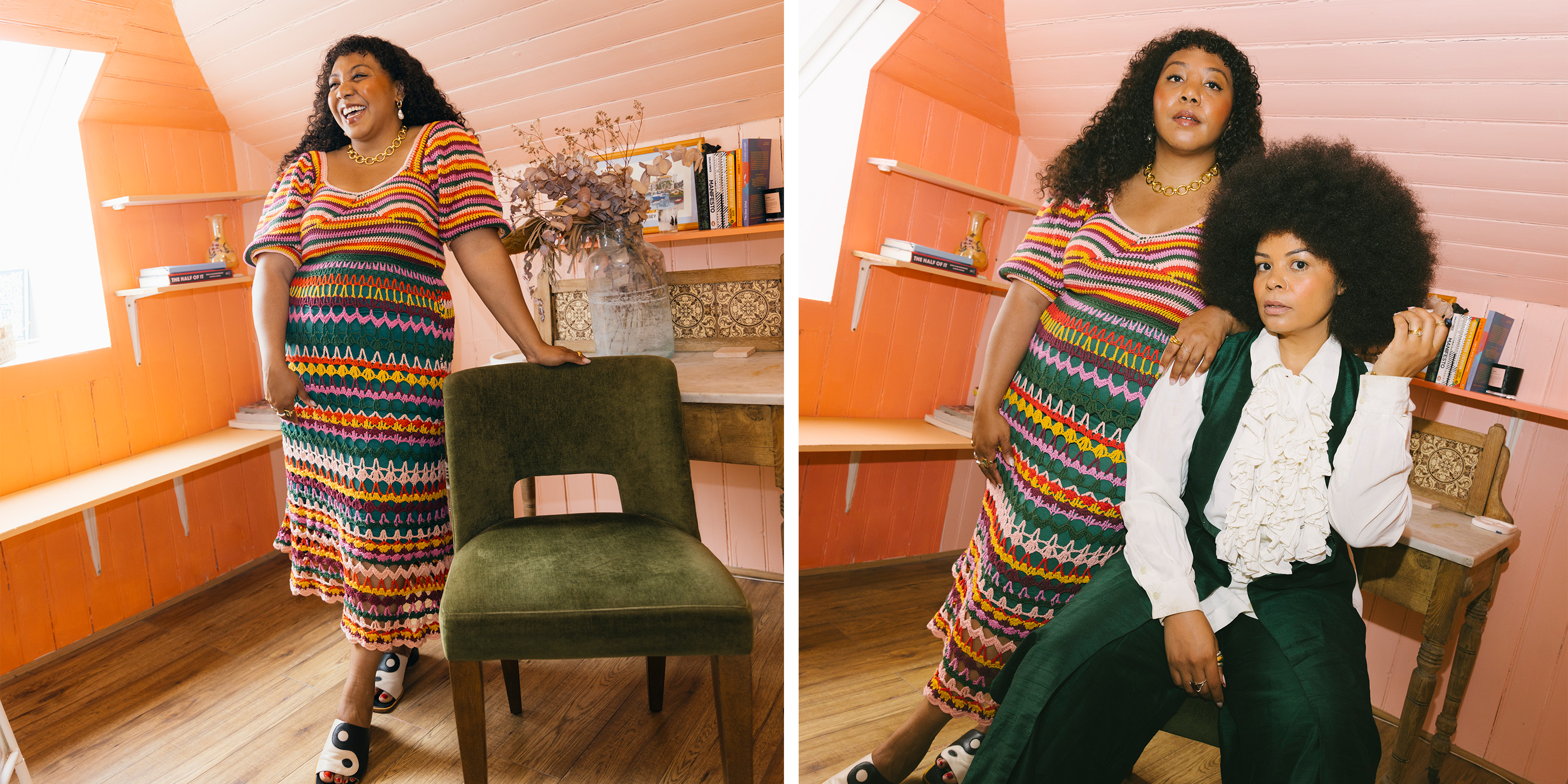
NO: Now that the book has been such a long time in the works, I feel quite far removed from the writing process. We were approached to do the book back in 2020, and we were deep into the first season of the podcast at that point. Now to be at the point of launch is totally surreal, and when we think about the generosity of people sharing their stories with us on the podcast and again with the book, it was really important for us to challenge this really specific idea about what it means to be mixed. There are a lot of stereotypes and often the expectation is you're talking about a mixed Black and white person, which isn't my personal experience. And so we knew right away that we wanted to highlight real life and not this trendy thing that people think of, like mixed families in a car commercial. These people have always been here and are generations and generations old, and it's such a global story.
We do think about how it will be received, especially when we first started doing events and speaking publicly about it. From the first day we started recording the podcast, we were like, "Not everyone's gonna like this," but be fair—people have been really kind overall. There hasn't been that much pushback. Having appeared in person in front of people who listen to the podcast or people who come from mixed families and are buying this book has made me realise once again how much this is not something that people had before. Emma and I were in Brighton doing our first book event, and there was a white grandmother there who has mixed children and grandchildren, and she immediately wanted to ask questions that raised points of difference that I'd noticed in myself but didn't have the words to vocalise them.
It was heartwarming that this grandmother was bringing this to us and wanting to learn, and now we speak to parents all the time. But it's not just a parent-and-child issue. We hope that the book is something that everyone will feel connected to because it's something that we should all be interested in. We should all be wanting to speak more freely about race and identity in this way whether you're mixed or not, whether you have mixed children or not, whether you're in an interracial relationship or marriage or any of those things. There's something in there for everyone to connect to.
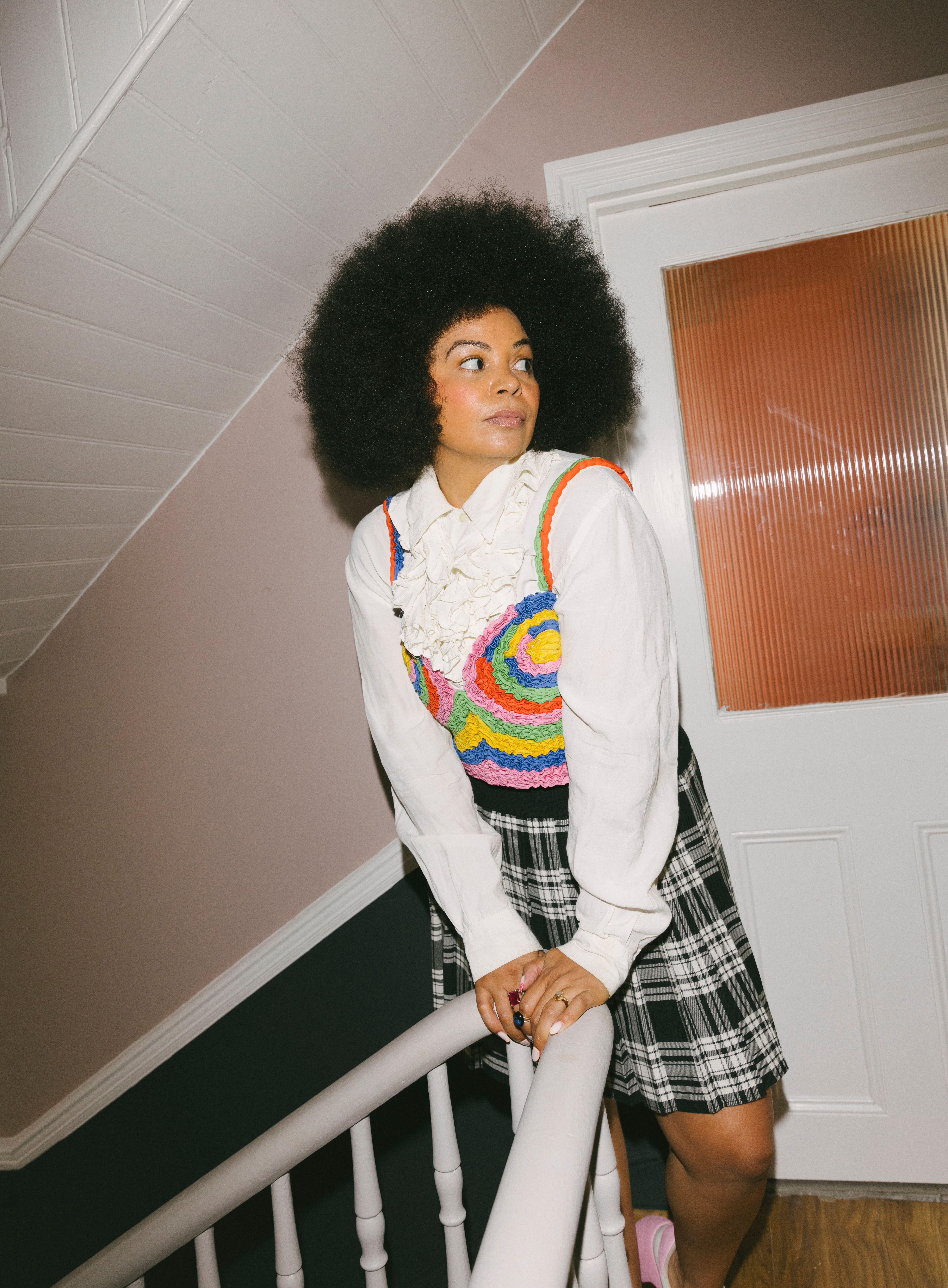
ESE: There is a lot of history in the book, and it's important to remember that it's not just our histories as mixed people—it's all of our history. During the writing process, we were so focused on trying to do everyone's stories justice and get the overall picture right. There was just so much to do with this book that it was really hard, one of the hardest pieces of work I've ever done.
NO: I think we'd really like for it to be food for thought for people. There are so many different conversations around mixed people online being told that they're not Black because they're mixed or they can't weigh in on conversations, even public figures like Meghan Markle or Naomi Osaka. These things might be in jest, but again, it's another way of shutting people out or making them feel like they don't matter. Why is the criteria Fenty [Beauty] shade 300 or lighter? Why not 400? Why not two? As a mixed person, I'm always like, what is the marker? And when am I ever going to meet that level that makes me feel like somebody doesn't have something they can take away from me? Hopefully it allows for people to think about those things and their own families and their own friendships in a different way.
ESE: There is a huge spectrum in being mixed. We are not a monolith. There are unifying things that we can understand, but I think it's really important that people get to grips with there being so many different voices and experiences.
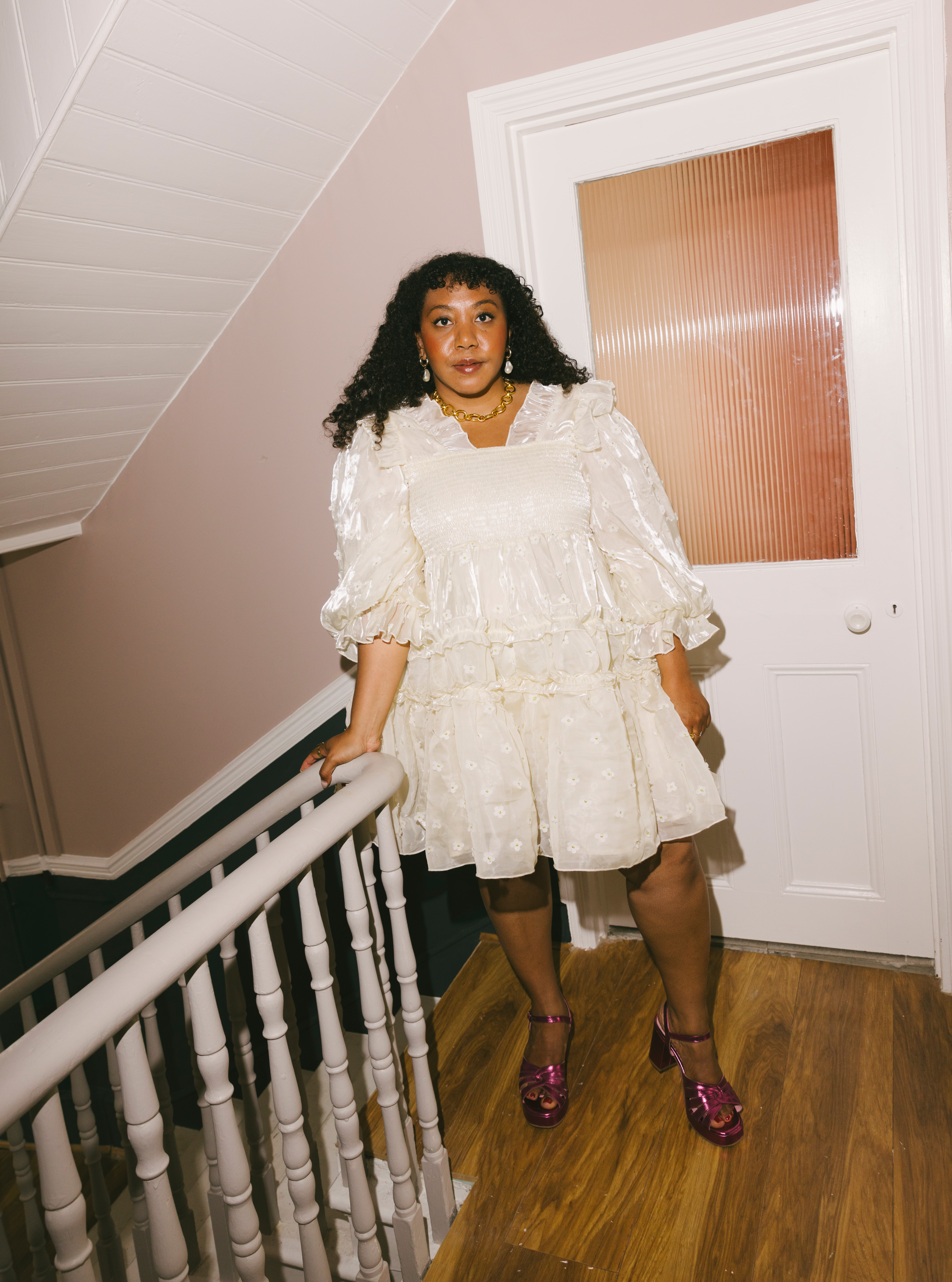
It depends who you are as to what you'll get from the book. If you are mixed, I'd probably like you to get to the end of this book and start to think about whether you have to give a shit so much and having to justify yourself all the time. Whether you can forgo responding to some of those indirect (and sometimes direct) questions all the time and also having a grasp on your history, on world history, and having the same aha moments we had. There's a reason there is so much adoption in mixed-raced stories, there is a reason that people often feel displaced, there is a reason there are so many tropes surrounding mixed-race women, in particular, and why they are based in the most racist stereotypes.
NO: Publishing a book about race as Black women and as mixed-race women, we kind of know where people are going to want to place this kind of book and this kind of content. People have assumptions about whether or not it's for them. And I think that was something, especially in 2020, that was a huge issue. Everyone was trying to scramble and educate themselves, but this stuff has been, and should be, there for everyone to read and learn. What's next for us? Firstly, I want to lie on beach for a while! But then back to writing. It's always been a dream of mine that I never thought would happen, so being able to continue down this path is the ultimate goal.
ESE: I have a children's book coming out in 2025 called Mixed. Yes, it's the same, sorry! But I'd love to do some fiction. It turns out it's quite hard to do fiction before non-fiction, so I'm psyched for that challenge. I'm also really looking forward to getting back into it with my sustainability consultancy clients because I've had to scale back whilst writing the book because it's been such an intense process, but I can't wait to get back into it.
The Half of It (HarperCollins) by Emma Slade Edmonson and Nicole Ocran is available to buy in hardback now.
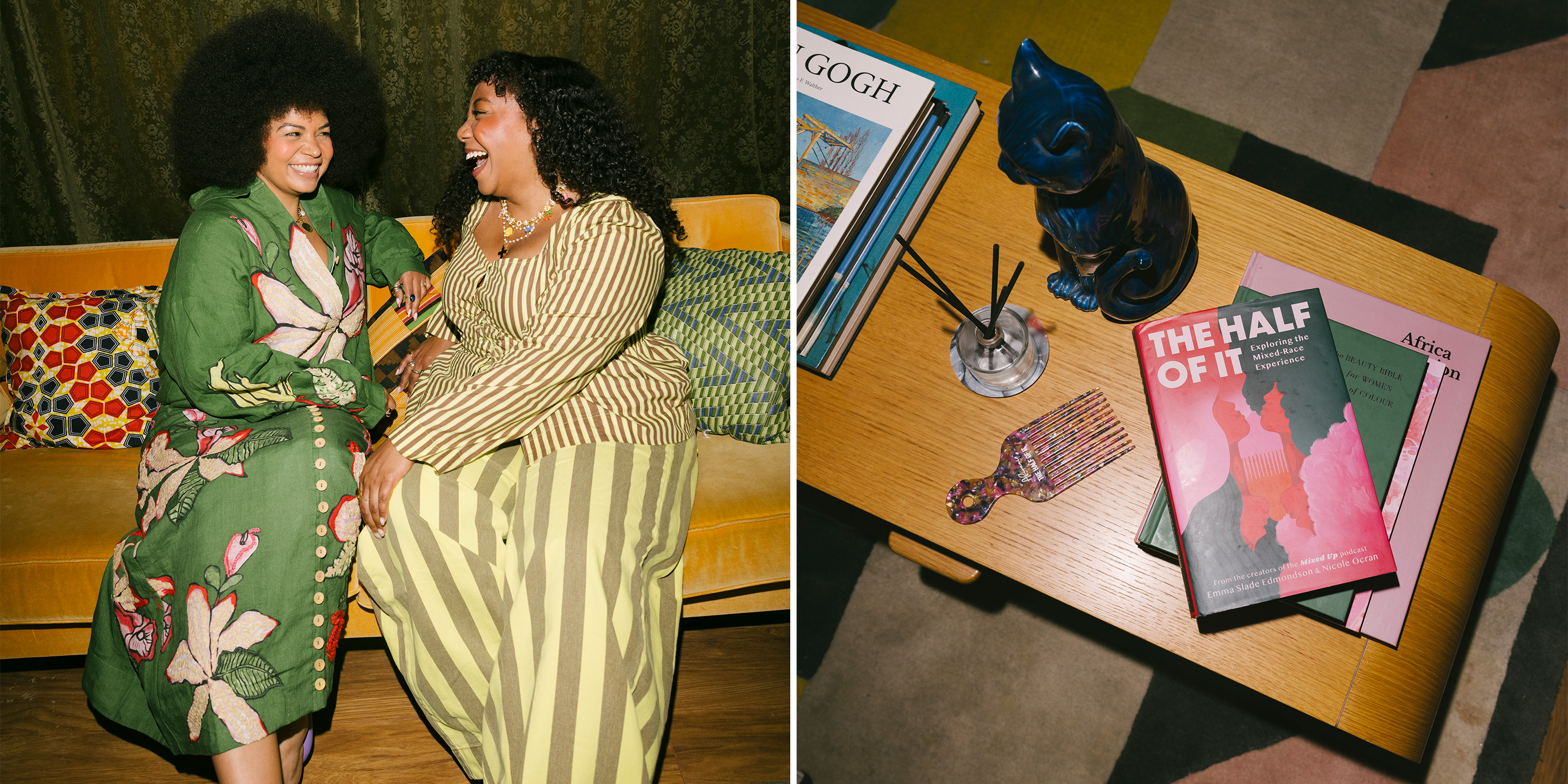
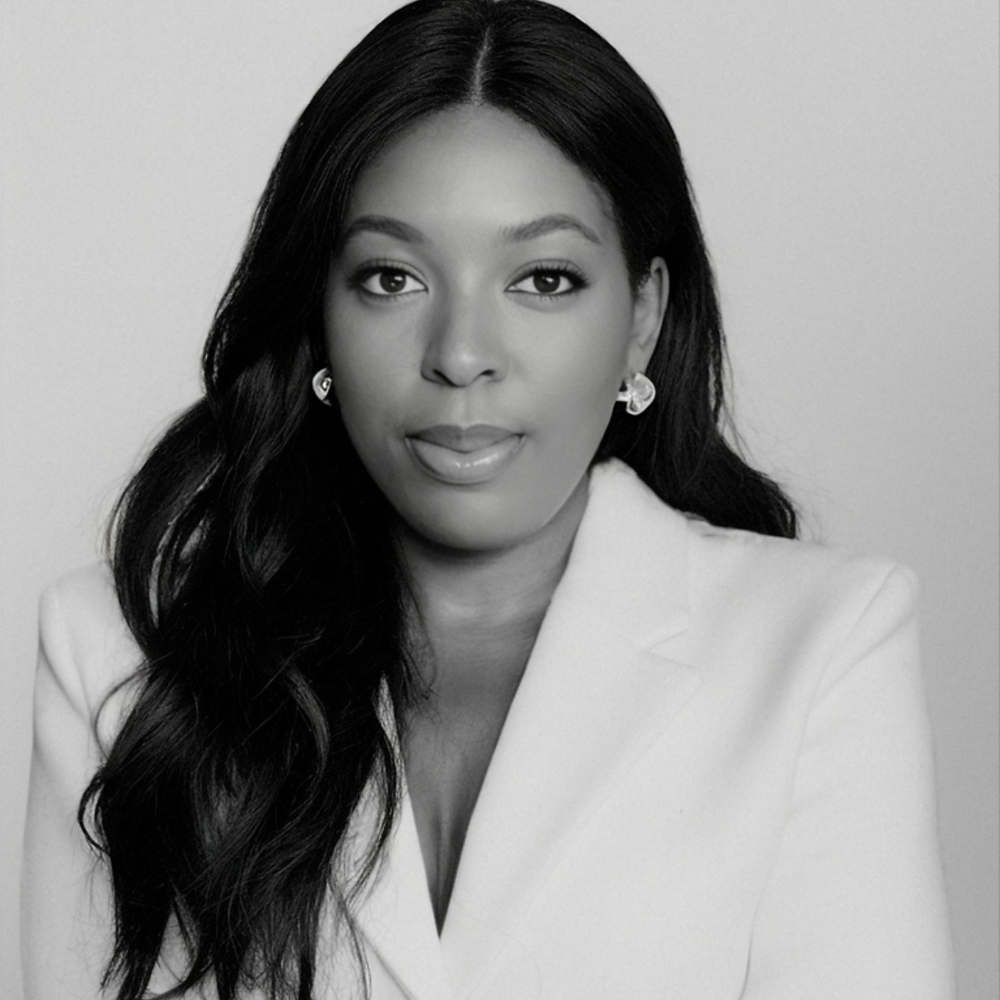
Remy Farrell is a London-based fashion editor with 10 years of experience covering fashion, beauty and lifestyle. After graduating with a journalism degree and working on the fashion teams for titles such as Grazia, Elle, and British Vogue, she moved into the luxury e-commerce sector, working as fashion assistant at TheOutnet.com After expanding an assisting and styling portfolio that includes talent such as Gigi Hadid, Victoria Beckham and Miquita Oliver, she ventured into beauty, compiling reviews and diverse beauty content.
In her role as fashion editor atBest Knockoff Luxury Clothing
, Remy is interested in discovering new brands to share with the WWW UK readership, and loves uncovering hidden gems to make shopping accessible to everyone.
